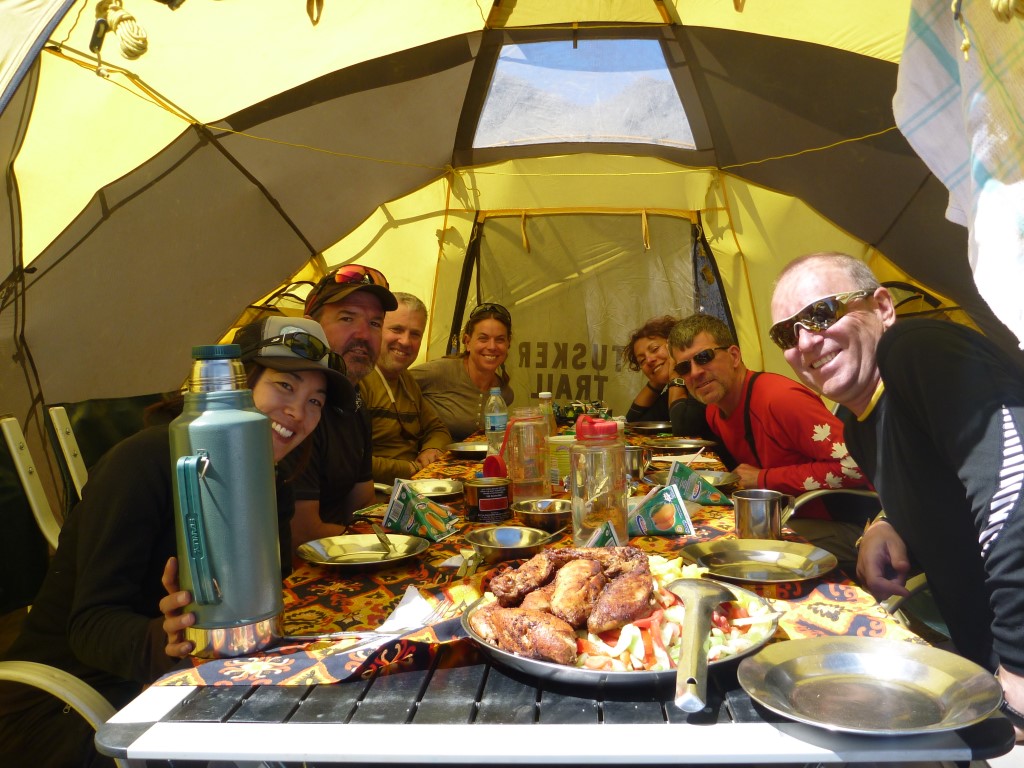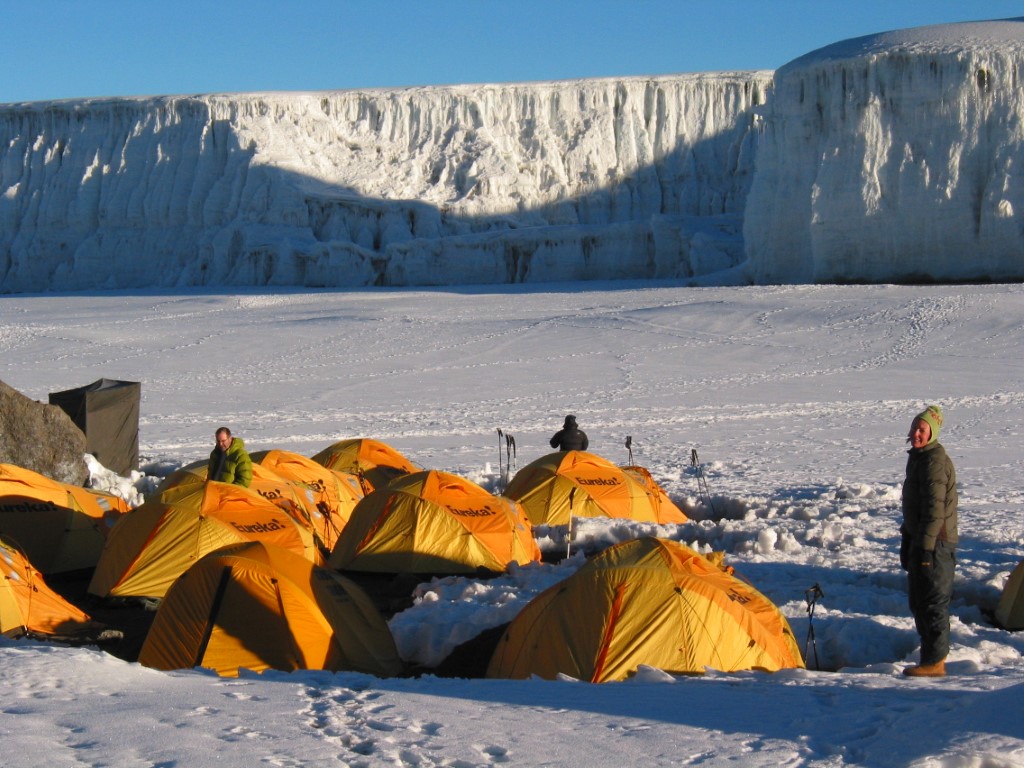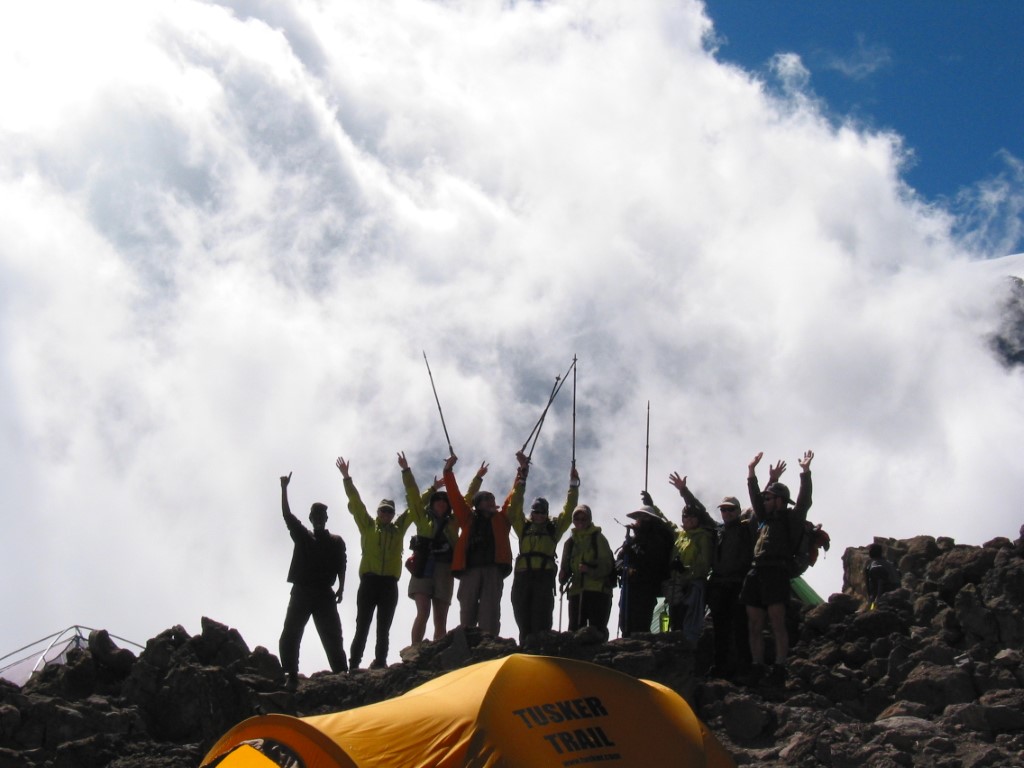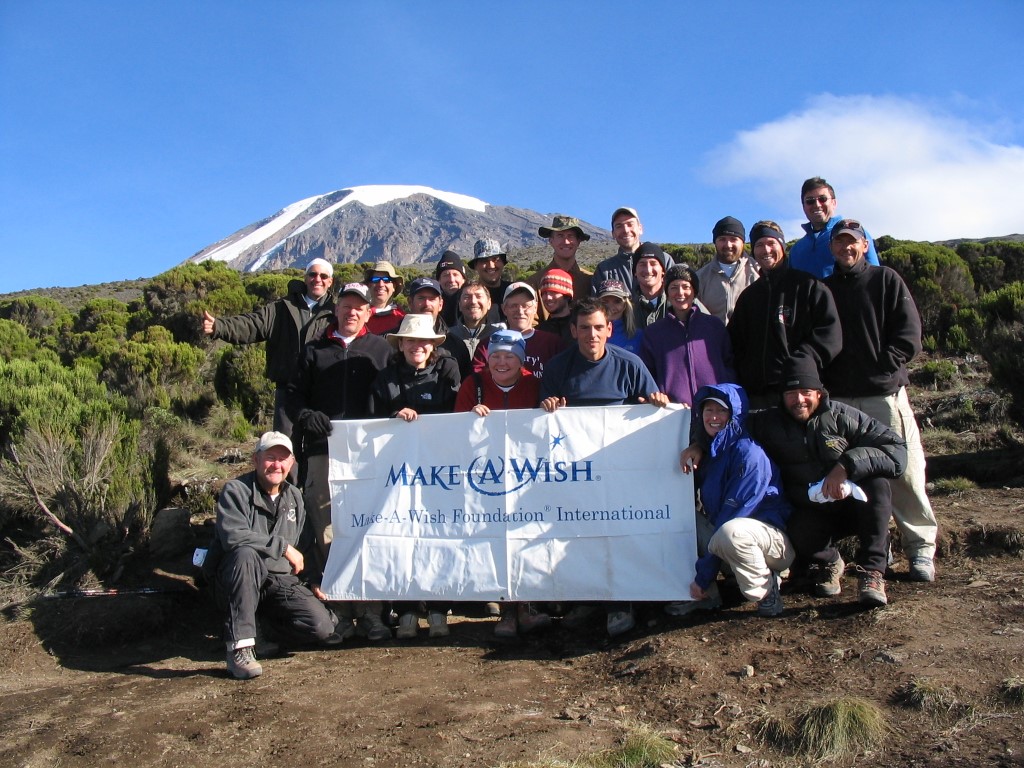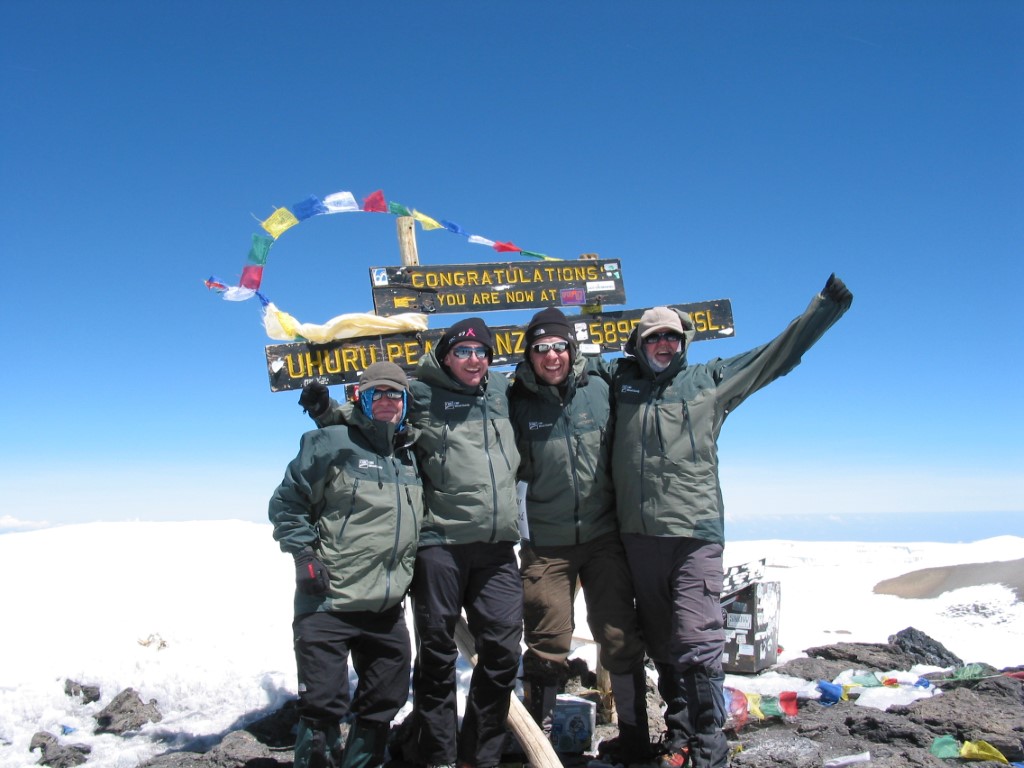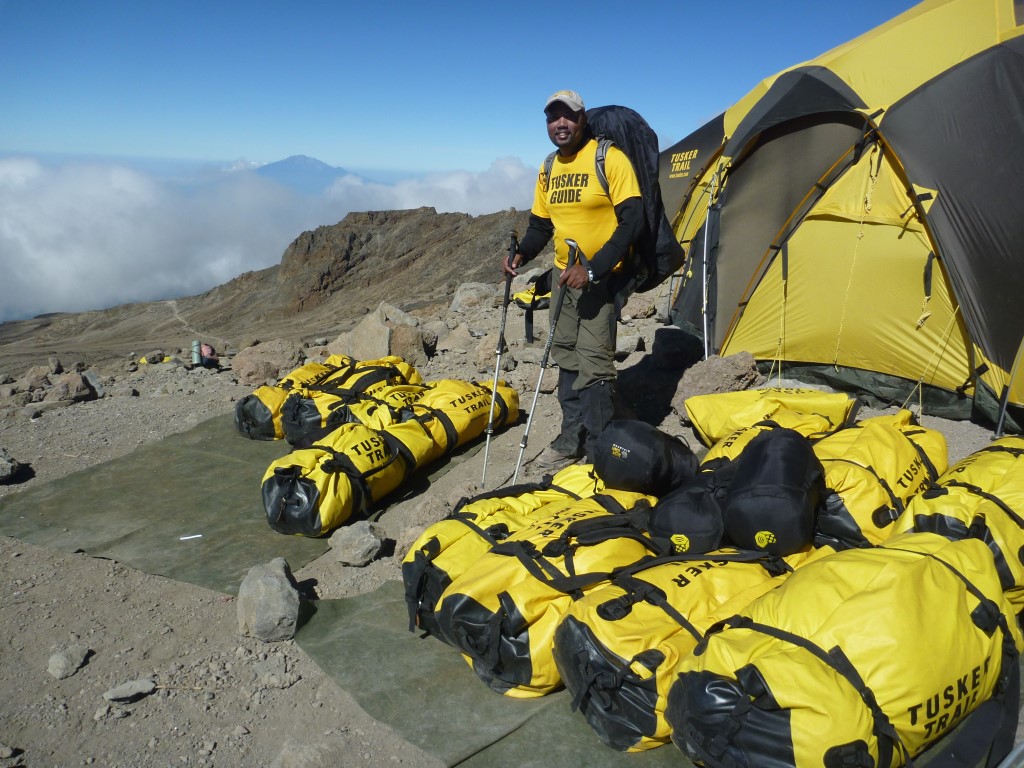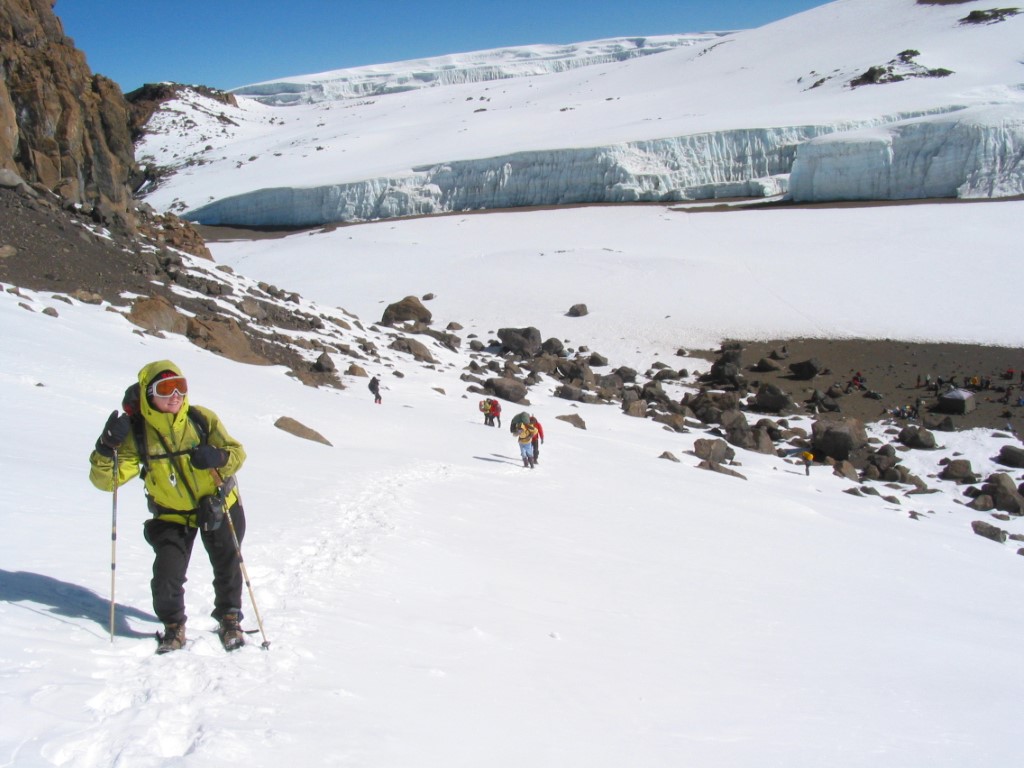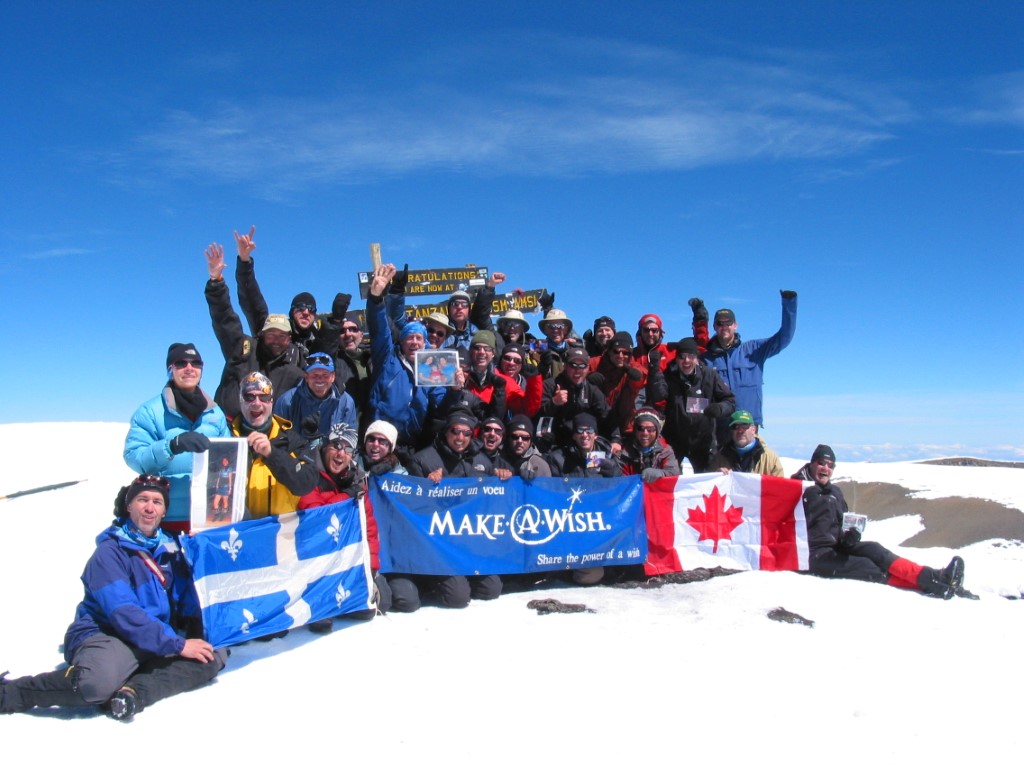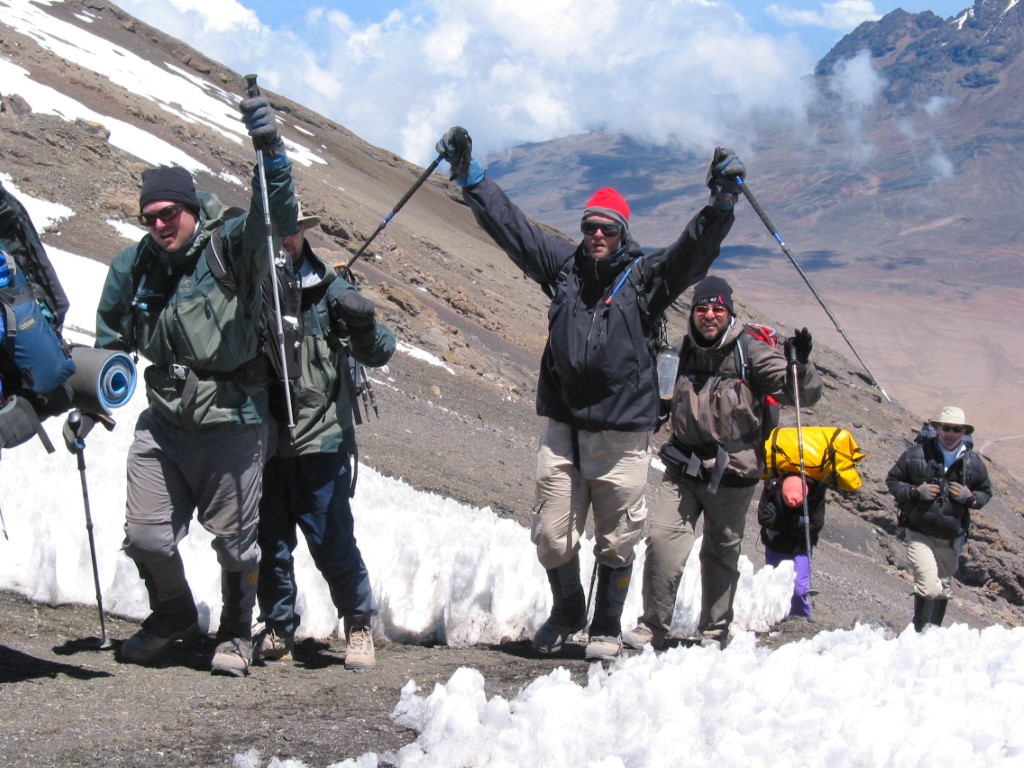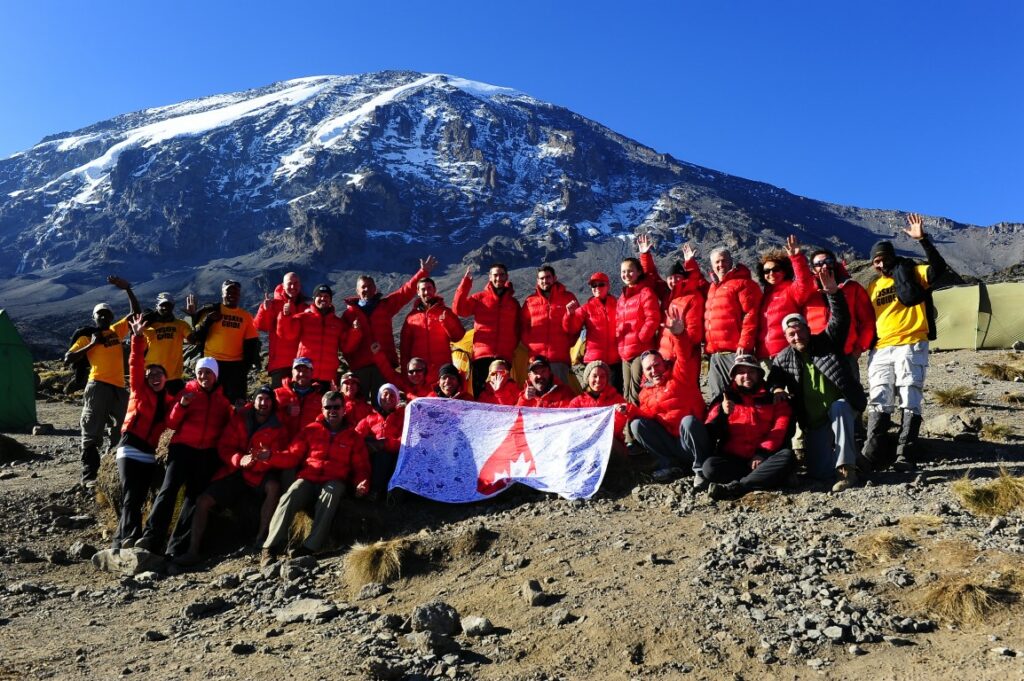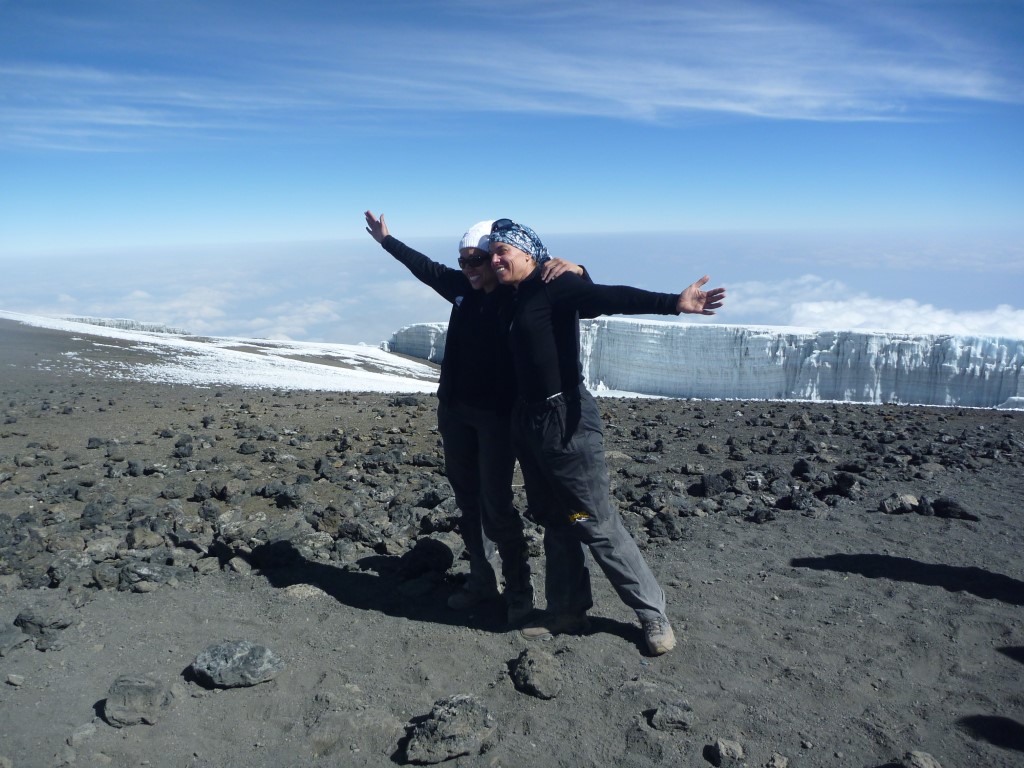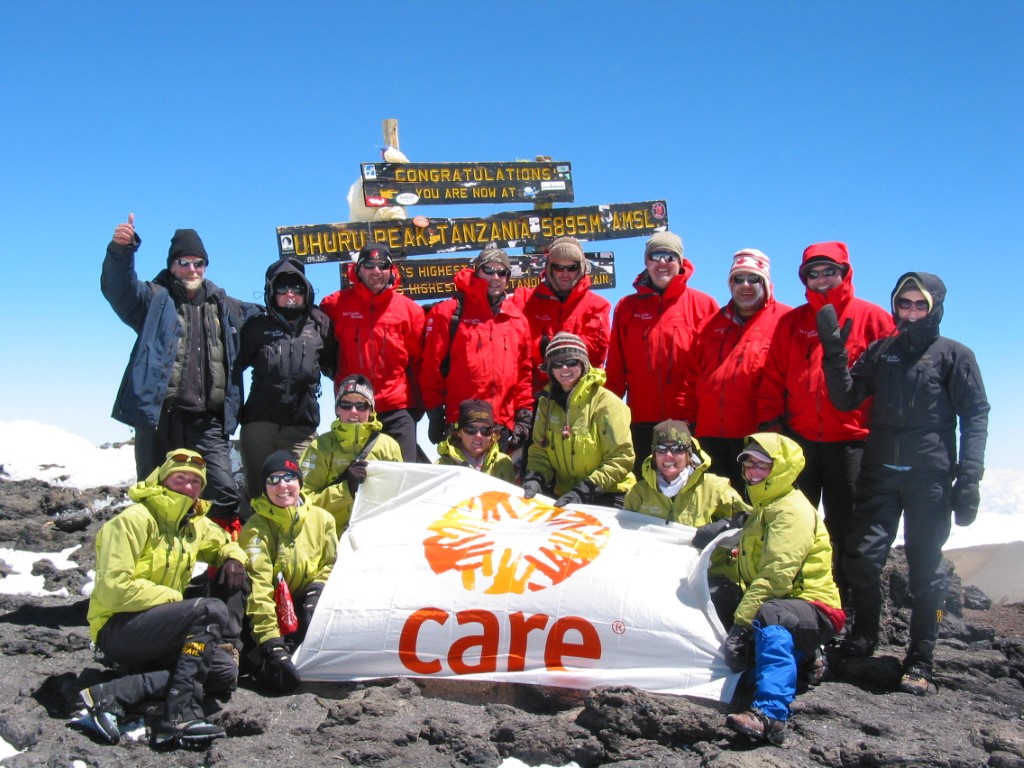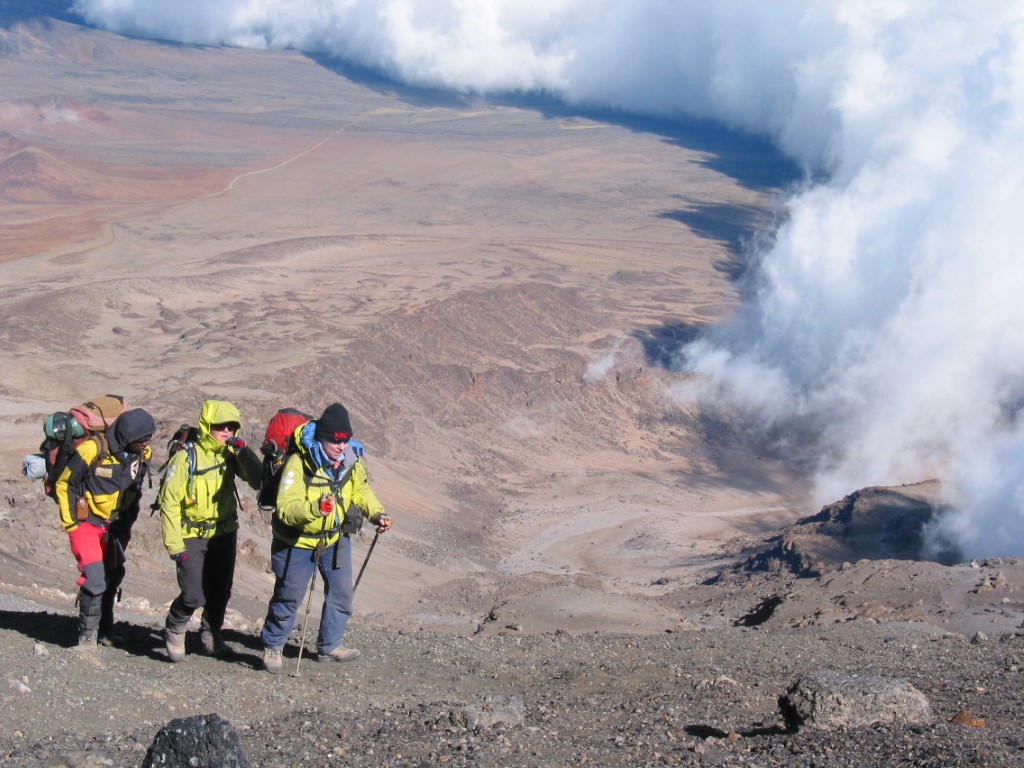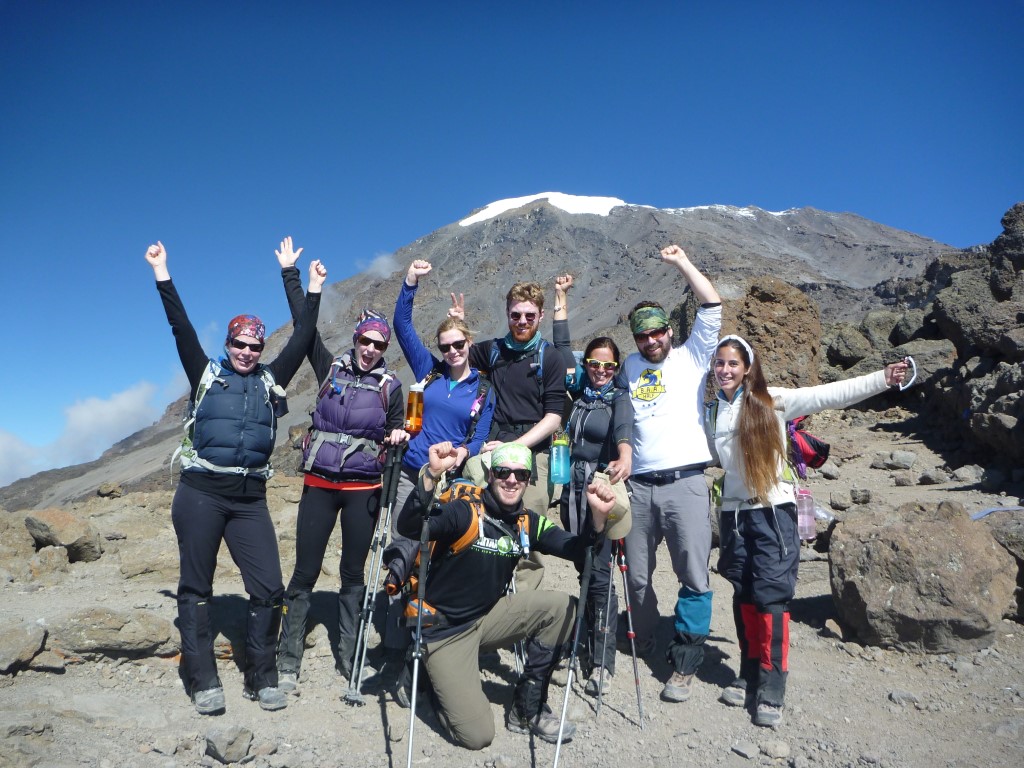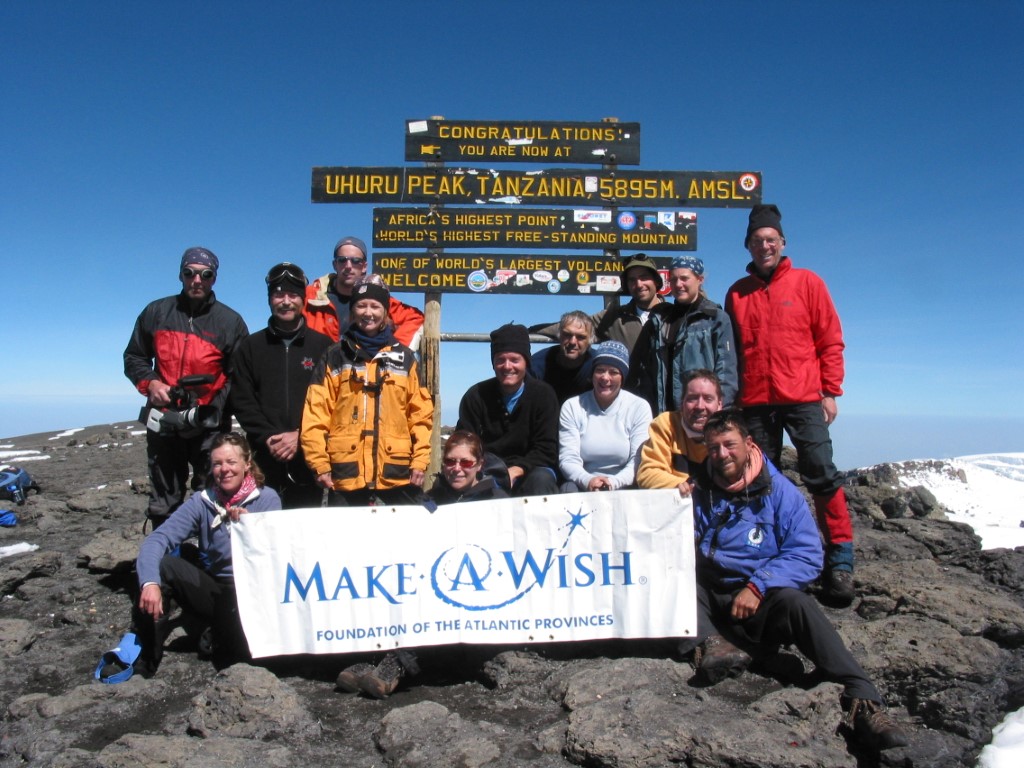International:
North America:
Menu

THE KINGS OF KILIMANJARO
International:
North America:
- Home
- Kilimanjaro Climb
- Kilimanjaro Planner
- Other Treks
- About Us
- Dates + Prices + Booking
- Contact
International:
North America:

THE KINGS OF KILIMANJARO
International:
14 Days
Climb the Spiral Route
Embark on a journey of a lifetime, as you explore the mighty 14-day Spiral Route. This unique trek, crafted by Tusker’s founding guide Eddie Frank, spirals around Kibo Peak on the seldom-hiked western slopes before reaching the summit of Uhuru Peak – the highest point in Africa.
Experience the thrill of winding your way around the mountain, taking in the fantastic views, and hiking the summit in full daylight instead of the dark of night. Be awe-struck as you navigate unique terrain, and savor delicious, regionally-inspired meals.
With Kilimanjaro’s lite team of medically trained High Altitude First Responder guides by your side, you hike with peace of mind. And with Tusker’s 48 years of Kilimanjaro experience you have the confidence to make this adventure truly unforgettable.


















































































Route Stats
Crater Camp
On the Tusker Spiral Route you experience the enchantment of Kilimanjaro’s crater, where you camp just beneath Uhuru Peak, with no one else around.
Camping in Kilimanjaro’s crater is a thrill-seeker’s dream come true. As the sun dips below the horizon, painting the sky with hues of orange and pink, the excitement builds. Nestled within the volcanic crater, the air is thin, crisp, and filled with anticipation. Surrounded by towering peaks and rugged terrain, the sense of isolation is palpable yet exhilarating. We hike to the seldom visited Ashpit, and summit twice (if you like) – once on the ascent and again before descending the next day.
If you prefer not to camp in the crater, then you can hike back down to Barafu camp for the night and join up with the group the next day.
Day 1 – MOSHI
3,000-ft/914-m
As you board the plane to Kilimanjaro, your heart races with anticipation, knowing that this journey will be unlike any other. Upon arrival, your driver whisks you away to the enchanting Bristol Cottages Hotel in Moshi, your home base for the next two nights.
Here, you can recharge your batteries, unwind, and prepare yourself for the ultimate challenge that lies ahead. As you settle into your room, the thought of the climb ahead fills you with excitement and anticipation. After a delicious meal, a refreshing shower, and a comfortable bed, you’re ready to take on the adventure!
Day 2 – MOSHI
3,000-ft/914-m • Meet Your Expert Guides
As you meet your Tusker Mountain Guides for the climb orientation and final equipment check, an invigorating sense of enthusiasm and passion fills the air. This is the chance to bond with your team leaders and fellow climbers, sharing your thoughts about the climb.
Following the gear check, one of your guides takes you and the group to Moshi, a lively Tanzanian town at the base of Kilimanjaro. Here, you can immerse yourself in the vibrant culture by exploring the colorful Moshi market, giving you a genuine taste of the journey that awaits!
Day 3 – SIMBA CAMP
8,760-ft/2,670-m • 4.3 miles/6.9 km • 2.5 – 3 hours
Setting out from Moshi after breakfast, you embark on a two-hour drive to the starting point on the northern side of Kilimanjaro: Nalemuru Gate. Here, you meet the full crew and check into the park. The trail winds through village fields before entering the rain-forest, offering a gentle hike through lush surroundings.
Your first camp, Simba Camp, awaits you at the edge of the heath and moorland zone, providing stunning views of the Kenyan plains below. After freshening up, you tuck into your first scrumptious Kilimanjaro dinner, a well-earned reward for your efforts thus far.
Day 4 – SECOND CAVE
11,320-ft/3,450-m • 4.35 miles/7 km • 3-4 hours
Waking up to the beautiful birdsong of the early morning is an incredible experience. After filling up with a good, hearty breakfast and completing a thorough medical check-up, our group sets out on the trail, hiking through the lush heather vegetation.
The views of Kibo Peak and the Eastern Ice-field are truly breathtaking and make for a stunning backdrop. This is a critical elevation for you to acclimatize to lower oxygen pressure, which is important for adapting to the higher altitude ahead. So we embark on an afternoon hike to even higher terrain, preparing ourselves for the thinner air that awaits us in the days ahead.
Day 5 – THIRD CAVE
12,912-ft/3,936-m • 2.6 miles/4.2 km • 3 hours
Today’s trek on Kilimanjaro’s northwest slopes unveils one of the most stunning views you’ll ever lay eyes on. We embark on a fairly easy and short journey to Third Cave, located on the western slopes.
With a modest elevation gain of only 1,600-ft/488-m, this climb is part of our meticulously crafted strategy for acclimatization to the higher altitudes that lie ahead. Whether you choose to explore the slopes for phenomenal views or simply relax at camp, you’ll be surrounded by the serene beauty of the mountain, a true paradise.
Day 6 – POFU CAMP
13,180-ft/4,017-m • 4.2 miles/6.7 km • 5-6 hours
We embark on a full-day trek, traversing the seldom-used western slope toward Pofu Camp. With a gradual elevation gain of just 260-ft/80-m, you’ll trek through the towering giant heather, surrounded by the stunning beauty of Kibo Peak on your left and the vast Shira Caldera on your right.
Shira Caldera was once a peak of Kilimanjaro until its last eruption 500,000 years ago, causing it to collapse and transform into a deep caldera. Over time, it has evolved into a sprawling plateau, filled with layers of sediment dating back thousands of years.
Day 7 – MOIR CAMP
13,650-ft/4,160-m • 6.2 miles/10 km • 6-7 hours
In these early days of the climb, you may notice that we don’t gain much altitude. This is part of our strategy to make the ascent easier as you gradually adjust to the elevation. Following a full day’s trek, we ascend the Lent Group before descending into Moir Camp, nestled at the base of a colossal lava flow and carved deep into the canyon by ancient glaciers.
As you stand on the edge of the valley, you’ll see alternating layers of lava and sediment towering over the lateral moraine. Evenings at Moir Camp are simply awe-inspiring, with heat lightning illuminating the plateau in a stunning display.
Day 8 – BARRANCO CAMP
12,950-ft/3,950-m • 6.2 miles/9.9 km • 6-7 hours
We begin the day with a challenging uphill trek into the alpine zone, heading towards Lava Tower at an altitude of 15,200-ft/4,633-m. Reaching the base of the tower, we pause for a well-deserved lunch, allowing our bodies to acclimatize to the elevation.
As we continue our journey, we descend steeply, taking in the unique plant life that thrives in this unusual habitat, such as Giant lobelias and Senecios. Our camp for the night is located at the base of the formidable Barranco Wall, and the air is filled with anticipation as climbers from around the world prepare to conquer this imposing structure.
Day 9 – KARANGA CAMP
13,200-ft/4,033-m • 3.6 miles/5.8 km • 4-5 hours
Stepping out of your tent in the morning, your gaze is immediately drawn to the awe-inspiring sight of the Barranco Wall. Its fortress-like structure looms in the distance, an imposing obstacle standing between you and your ultimate goal of Uhuru Peak.
After breakfast, we begin the scramble up the wall, which takes around two hours to ascend about 500-ft/152-m out of the valley. As we make our way up, the stunning views of ancient lava flows and towering peaks surround us. We then embark on a winding hike, with Kibo Peak on our left, descending into Karanga Valley before ascending once again to our camp for the night.
Day 10 – BARAFU HIGH CAMP
15,790-ft/4,813-m • 2.6 miles/4.18 km • 5 hours
Our hike to Barafu High camp is tough, but we continue to push forward, taking breaks when necessary and regain our strength. The rewards that await us at the end of this journey are worth every step we take.
As we reach Barafu High Camp, the air is electric with the excitement and anticipation of what tomorrow holds. With Mawenzi peak in sight, basked in the warm African sun, we are inspired and uplifted, knowing that we have come this far and we can conquer whatever lies ahead.
Day 11 – UHURU PEAK – CRATER CAMP
Summit: 19,341-ft/5,895-m • 2.55 miles/4.1 km • 6-7 hour
Crater Camp: 18,810-ft/5,733-m • 1.5 miles/2.4 km • 1 hour
You step out of your tent before the sun rises, fully geared up for the most exciting day. The climb is steep and challenging, but your determination fuels you to reach the Crater rim by mid-day.
With Mawenzi Peak behind you and towering ice-walls ahead, excitement builds within you for the ultimate prize: Uhuru Peak, the highest point in Africa. Then finally, as you stand at the summit, taking in the breathtaking views, you feel alive like never before.
Descending into the Crater camp for the night, the rush of euphoria hits you: no one else is sleeping higher than you on the entire African continent!
Day 12 – MILLENNIUM CAMP
Millennium: 12,590-ft/3,837-m • 6.3 miles/10.1 km • 5-6 hours
The descent through the scree downhill is both exhilarating and tiring, and after 2 hours of careful navigation we arrive at Barafu, where we take a short break and refuel with some much-needed lunch. With the adrenaline still coursing through our veins, we embark on a further two-hour descent, finally arriving at Millennium Camp.
Settling in for the night, you can’t help but feel a sense of adventure and wonder. It’s your last night on Mount Kilimanjaro, and we savor every moment, enjoying a deep, restful sleep before tomorrow’s final descent to the national park gate.
Day 13 – MOSHI
Mweka Gate: 5,500-ft/1,676-m • 7.5 miles/12 km • 6 hours ~ Drive Moshi • 30 mins
As we begin the final leg of the climb, you can’t help but feel a surge of pride and accomplishment. The downhill hike to the National Park Gate signifies the end of an incredible journey. You revel in the sense of achievement that washes over you, knowing that you have accomplished something truly remarkable. The camaraderie with your climbing team fills you with a sense of joy and gratitude.
A short ride back to the Hotel in Moshi awaits, where a well-deserved hot shower and a cold drink is rejuvenating. In the evening, we gather for a celebratory group dinner, reflecting on our extraordinary feat with pride and satisfaction. We did it!
Day 14
Join an exciting SAFARI – Explore ZANZIBAR – or fly home.
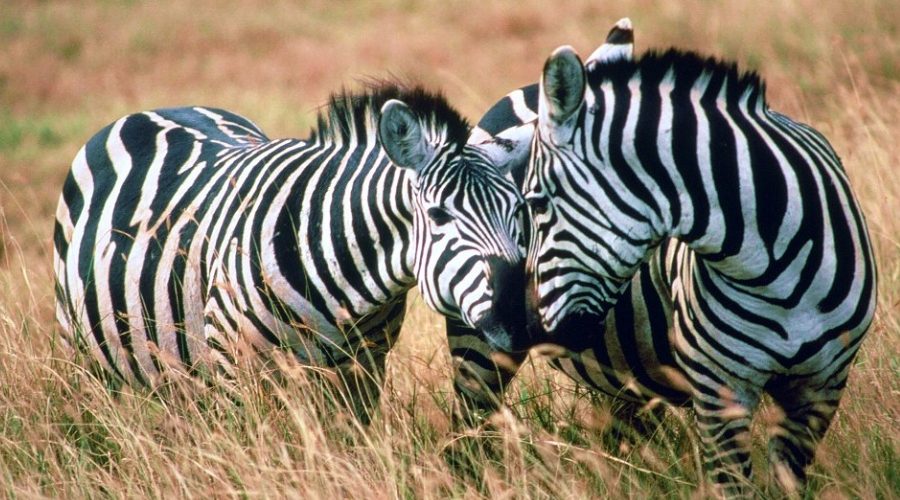
Safari
Get ready to venture out on an unforgettable adventure as you explore some of the world’s most spectacular animal reserves on a Wildlife Safari. From the Serengeti to Ngorongoro Crater, Lake Manyara to Tarangire National Parks, you’ll encounter a stunning array of wildlife in their natural habitats.
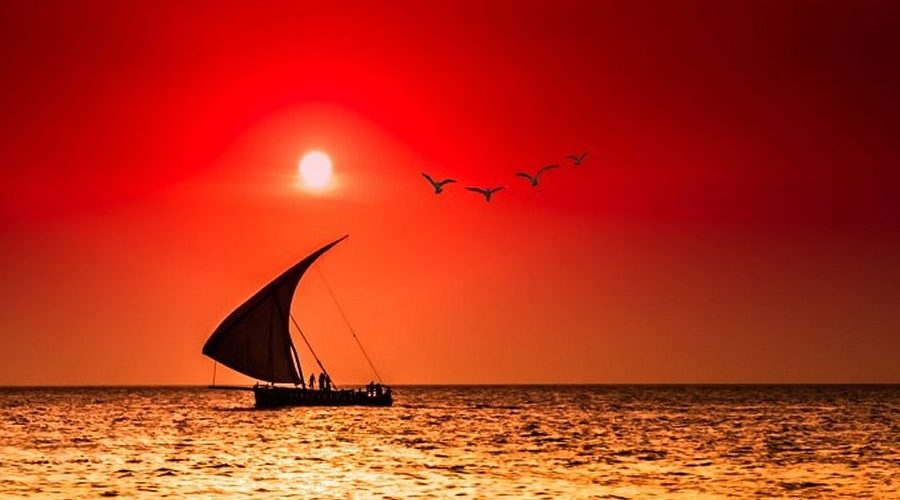
Zanzibar
Once you’ve conquered Kilimanjaro, it’s time to embark on an equally enchanting adventure – a journey back in time to the magical island of Zanzibar in the Indian Ocean. Lose yourself in the historical maze of ancient alleyways and indulge in the beauty of the most pristine beaches on earth.
Your Expert Guides
You can count on our elite team of guides to be the heart and soul of your Kilimanjaro summit challenge. Our Founding Guide, Eddie Frank, utilized the same techniques he used when training the US Army’s Special Forces to build Tusker’s outstanding team of guides. With many thousands of successful Tusker climbers reaching the summit over the decades, our team is highly experienced and skilled in leading climbers to the top. So, you can be confident that you are in highly skilled hands with your distinctive team of Tusker guides.

Eddie Frank, Tusker Founder & Head Guide …
“A few years ago, as part of the Discovery Gene I inherited from my dad, I felt the need to explore Kilimanjaro and develop a new route for Tusker’s adventurers. As there were 50,000 climbers a year going up the standard routes, I felt this would be a great challenge.
I carved out the Tusker Spiral Route, a combination of remote trails where you circumnavigate the entire mountain in an extended climb. This allows you to soak up the complete mountain, and face your challenge in the most rewarding way. It is the climb of climbs.”
Your Climbing Crew
Your successful climb up Kilimanjaro will be a result, in no small part to your incredible climbing crew. These amazing individuals are the backbone of your adventure, ensuring that your camp is set up and your gear is in order every step along your climbing route. They are fiercely loyal to Tusker Trail and have become like family for decades.
Not only will your porters and chefs look after your camp and gear, but they also offer a unique glimpse into Tanzanian culture. From the inspiring songs they sing of Kilimanjaro to the fascinating traditions and customs, you’ll be immersed in a world unlike any other. You and your team climb like one big family, bonded in the quest to reach the summit.
Photo Gallery
